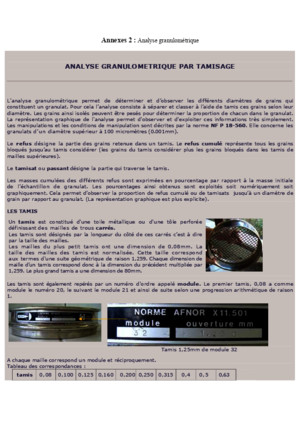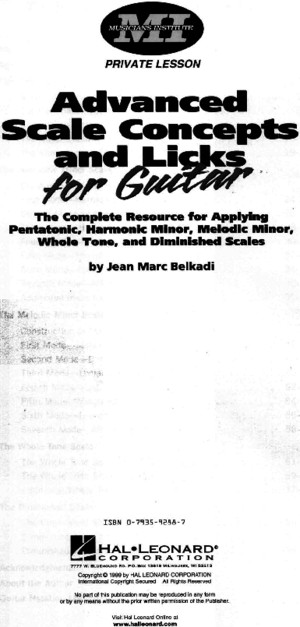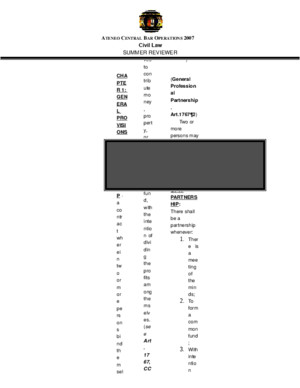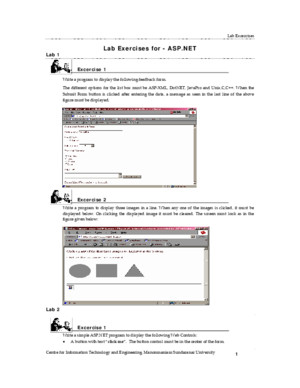Adapalene, Etanercept and Triptane mirfa
There is document - Adapalene, Etanercept and Triptane mirfa available here for reading and downloading. Use the download button below or simple online reader.
The file extension - PDF and ranks to the Education category.
Tags
Related
Comments
Log in to leave a message!
Description
Download Adapalene, Etanercept and Triptane mirfa
Transcripts
1 ADAPALEN, ETANERCEPT TRIPTAN ADAPALEN, ETANERCEPT TRIPTAN Mirfaidah N 2 ADAPALENE • Vitamin A and its derivatives (retinoids) exert a wide range of effects on embryonic development, cell growth, differentiation, and apoptosis • Vitamin A cannot be synthesized by any animal species and is only obtained through diet in the form of retinol, retinyl ester, or β-carotene • Ingested vitamin A is stored as retinyl esters in hepatic stellate cells • Vitamin A and its derivatives (retinoids) exert a wide range of effects on embryonic development, cell growth, differentiation, and apoptosis • Vitamin A cannot be synthesized by any animal species and is only obtained through diet in the form of retinol, retinyl ester, or β-carotene • Ingested vitamin A is stored as retinyl esters in hepatic stellate cells 3 Synopsis of factors involved in the pathogenesis of acne 4 Synopsis of the FGFR2b (Fibroblast growth factor) signaling pathway orchestrating all major downstream cascades involved in the pathogenesis of acne The three major downstream FGFR2b-signaling cascades: the MAPK (Mitogen- activated protein kinase) pathway-inducing cell proliferation and MMP/Matrix metalloproteinase expression, the PI3K/Akt- (Phospatidylinositol 3-kinase) and Shh/MC5R (Melanocortin-5 receptor) pathway-inducing lipogenesis and terminal sebocyte differentiation, and the phospholipase Cg/protein kinace C pathway-inducing IL-1a, and inflammatory reactions 5 Hypothetical synopsis of anti-acne agents targeting the FGFR2 pathway (1) Anti-androgens compete with an androgen receptor and reduce FGF- ligand expression, (2) benzoyl peroxide induces lysosomal FGFR2 degradation by ROS(Reactif oxygen spesies) formation, (3) azelaic acid depletes cellular ATP levels for phosphorylation events, (4) atRA induces expression of Sprouty thereby inhibiting the MAPK cascade and induces MKP3 (MAP Kinase phosphatase) for de-activation of ERK, 13cRA downregulates 5a-reductase 1 expression, and (5) tetracyclines inhibit the expression and activity of MMPs 6 • Retinol is reversibly oxidized by retinol dehydrogenases to yield retinal Subsequently, retinal may be irreversibly oxidized to all-trans retinoic acid (all-trans RA) by retinal dehydrogenases and further oxidized by cytochrome P450 enzymes (mainly CYP26) in hepatic tissue • All-trans RA isomerizes under experimental and physiological conditions Different isomers activate different receptors and thus lead to different biological effects RAs designed to be receptor specific can improve efficacy and avoid unwanted side effects • Retinoids that specifically bind to RXR are called rexinoids and have been effective in cancer treatment • Retinol is reversibly oxidized by retinol dehydrogenases to yield retinal Subsequently, retinal may be irreversibly oxidized to all-trans retinoic acid (all-trans RA) by retinal dehydrogenases and further oxidized by cytochrome P450 enzymes (mainly CYP26) in hepatic tissue • All-trans RA isomerizes under experimental and physiological conditions Different isomers activate different receptors and thus lead to different biological effects RAs designed to be receptor specific can improve efficacy and avoid unwanted side effects • Retinoids that specifically bind to RXR are called rexinoids and have been effective in cancer treatment 7 Retinol At-retinaldehyde At-retinoic acid (RA) Degradation At-RA for T cells Vitamin A (retinyl ester) in food Vitamin A (retinyl ester) in food REH: retinyl ester hydrolase ADH: alcohol dehydrogenase AKR: aldo-keto reductase RALDH: aldehyde dehydrogenase CYP26: cytochrome P450 SDR: short-chain dehydrogenase/reductase REH AKR, SDR ADH1 4, SDR RALDH1 2 CYP 26 Synthesis of retinoic acid in the dendritic cells of the in- testine Vitamin A is consumed as retinyl ester and hydrolyzed by retinyl ester hydrolase (REH) Retinol, entered into cells, is oxi- dized to retinaldehyde by alcohol dehydrogenase (ADH) or short- chain dehydrogenase/reductase (SDR) The reverse reaction is me- diated by aldo-keto reductase (AKR) or SDR Retinaldehyde can be converted to retinoic acid (all-trans retinoic acid or At-RA) by retinaldehyde dehydrogenase (RALDH) Retinoic acid is degraded in cells by cytochrome P450 (CYP26) It is known that dendritic cells in the gut-associated lymphoid tissues (GALT) such as Peyer’s patches and MLN express high levels of ADH1, ADH4, RALDH1, and/or RALDH2 The retinoic acid produced by dendritic cells can be exported for other cells such as T cells during the cognate inter- action between dendritic cells and T cells Degradation 8 Retinoid PathwayRetinoid Pathway Retinoids absorbed from food are converted to retinol and bound to CRBP in the intestine Then, retinol is converted to retinyl esters and enters into blood circulation The liver up takes retinyl esters, which are converted to retinol-RBP complex in the hepatocyte In the serum, the retinol-RBP complex is bound to transthyretin (TTR) in a 1:1 ratio to prevent elimination by the kidney and to ensure retinol is delivered to the target cell The uptake of retinol by the target cell is mediated by a trans-membrane protein named “stimulated by retinoic acid 6” (STRA6), which is a RBP receptor In the target cell, retinol either binds to CRBP or is oxidized to retinaldehyde by retinol dehydrogenase (RDH) in a reversible reaction Then, retinaldehyde can be oxidized by retinaldehyde dehydrogenase (RALDH) to RA In the target cell, RA either binds to CRABP or enters the nucleus and binds to nuclear receptors to regulate gene transcription Alternatively, RA can mediate via nongenomic mechanism and regulate cellular function Hepatocytes not only process retinoids, but also are the target cells In addition, hepatocytes located next to the storage site (stellate cell) Thus, retinoid-mediated signaling must have a profound effect in regulating hepatocyte function and phenotype 9 Non-genomic Actions • Retinoids also exert their effects via transcription independent pathway, which can occur in the presence or absence of nuclear receptor Retinoids mediated via RARs inhibit AP-1-regulated cell proliferation • RA also inhibits NFκB activity in mice • Mediated through RARβ, RA changes the intracellular Ca++ level and thus controls PI3K activation in neural cell • RARα can interact with mRNA in cytoplasm and control translation • Via nuclear receptor independent pathway, RA rapidly activates cAMP response element (CREB) binding protein in human bronchial epithelial cells • Retinoids also exert their effects via transcription independent pathway, which can occur in the presence or absence of nuclear receptor Retinoids mediated via RARs inhibit AP-1-regulated cell proliferation • RA also inhibits NFκB activity in mice • Mediated through RARβ, RA changes the intracellular Ca++ level and thus controls PI3K activation in neural cell • RARα can interact with mRNA in cytoplasm and control translation • Via nuclear receptor independent pathway, RA rapidly activates cAMP response element (CREB) binding protein in human bronchial epithelial cells 10 The nongenomic RXRα actions The cytoplasmic tRXRα through its interaction with p85α subunit of PI3K or undefined factors associated with TNF-R1 regulates cell survival, inflammation, and apoptosis In addition, RXRα can target mitochondria through heterodimerization with Nur77 to modulate mitochondria-dependent apoptosis 11 ETANERCEPT • RA is diagnosed through its distinc- tive effects on the joints and in skin, and the diagnosis is reinforced by the presence in serum of the rheumatoid factor (RF), although its presence is not mandatory for diagnosis of RA • RA is diagnosed through its distinc- tive effects on the joints and in skin, and the diagnosis is reinforced by the presence in serum of the rheumatoid factor (RF), although its presence is not mandatory for diagnosis of RA 12 Important environmental and biological factors associated with or possibly contributory to the pathogenesis of RA • Cigarette smoking • Tumour necrosis factor (TNF)-a activity • Abnormal and inappropriate B-lymphocyte activity, ie abnormal antibody production • Detection of circulating autoantibodies against Ig Fc; these autoantibodies have been termed ‘rheumatoid factor’, and they may be involved in the inappropriate presentation of antigens to T cells by B cells • Abnormal activity of certain signalling pathways in synovial tissue, eg the Wnt signalling pathway, which is involved in embryonic development and cell renewal In patients with RA, it has been reported that the synovial cells have abnormally high activity of the Wnt gene, as well as a number of other genes for several of the cytokines, cell adhesion molecules and chemokines At present, it is not known whether these abnormalities are causative or a result of the more fundamental abnormalities • Cigarette smoking • Tumour necrosis factor (TNF)-a activity • Abnormal and inappropriate B-lymphocyte activity, ie abnormal antibody production • Detection of circulating autoantibodies against Ig Fc; these autoantibodies have been termed ‘rheumatoid factor’, and they may be involved in the inappropriate presentation of antigens to T cells by B cells • Abnormal activity of certain signalling pathways in synovial tissue, eg the Wnt signalling pathway, which is involved in embryonic development and cell renewal In patients with RA, it has been reported that the synovial cells have abnormally high activity of the Wnt gene, as well as a number of other genes for several of the cytokines, cell adhesion molecules and chemokines At present, it is not known whether these abnormalities are causative or a result of the more fundamental abnormalities 13 TNF-α is a pleiotropic pro-inflammatory cytokine with many actions that are central to the pathogenesis of rheumatoid arthritis Along with interleukin 1, another important pro-inflammatory cytokine, TNF-α has therefore been a target for biological therapy in rheumatoid arthritis 14 Mechanisms of TNF-α signaling in injured nerve By occupying either of the two TNF-α receptors, the soluble TNF-α protein can produce different effects ranging from apoptosis to up-regulation of itself, other proinflammatory cytokines, or anti-inflammatory cytokines While the full details of these effects are not known, it is clear that stimulation of the p38 mitogen-activated protein kinase (MAPK) pathway is a critical signaling mechanism Activation of the JNK pathway can produce radically different effects, depending in part on activity in the pathway Studies with TNF-/- and TNFRI-/- and RII-/- mice are helpful in defining the inter-relationships of cytokines and their receptors 15 Biology of TNF production, receptor interaction and signaling Stimulation of a TNF-producing cell (top) results in cell surface expression of tmTNF trimers and enzymatic cleavage by TACE to release sTNF Both tmTNF and sTNF can bind to cell surface TNFR1 or TNFR2 on a TNF-responsive cell (bottom), initiating signaling pathways that lead to apoptosis or NF-κB activation and inflammatory gene activation The induction of apoptosis by sTNF via TNFR1 involves internalization of the ligand–receptor complex and association of death domains (DD) in the cytoplasmic tail of TNFR1 with adapter proteins and is normally blocked by FADD-like IL-1β–converting enzyme (FLICE) Reverse signaling can be initiated by TNFR2 or TNF antagonist binding to cell surface tmTNF, resulting in cytokine suppression or apoptosis Soluble TNF receptors (sTNFR1 and sTNFR2) can be released from a TNF-responsive cell following enzymatic cleavage 16 In the pathophysiology of RA, Crohn's disease and psoriasis, TNF is produced at high concentrations by a variety of cell types, presumably induced by endogenous or microbial stimuli A cascade and network of cellular responses mediated by TNF that are common to these 3 diseases are shown in the enclosed area in the center of the diagram Mechanisms and cellular features restricted to a particular disease are shown outside of the enclosed area 17 Four categories of putative mechanisms of action of TNF antagonists are illustrated The large panel illustrates the primary mechanisms of action, resulting from direct blocking of TNFR-mediated biologic activities In these instances, the TNF antagonists bind to the cognate ligands (sTNF or tmTNF for all 5 TNF antagonists and additionally LTα3 and LTα2β1 for etanercept), thereby blocking their capacities to bind TNFR1 or TNFR2 The right panel illustrates several mechanisms induced by the binding of TNF antagonists to tmTNF, which can include reverse signaling via tmTNF or cytotoxicity of the tmTNF-bearing cell by CDC or ADCC The small panel on the lower left illustrates 2 LTαβ-mediated mechanisms thought to be blocked by etanercept, the only TNF antagonist that binds LT family members The lower center panel shows pharmacokinetic-related mechanisms that involve TNF antagonist binding to FcRn or forming complexes with sTNF or antidrug (TNF antagonist) antibodies Denotes a TNF antagonist (infliximab, etanercept, adalimumab, certolizumab, golimumab) Denote TNFR1 and TNFR2 ETN = etanercept 18 • The pharmacological class of TNF alpha inhibitors includes etanercept (Enbrel) infliximab (Remicade) and adalimumab (HUMIRA) • etanercept molecule consists of 2 extracellular domains of human soluble TNF receptor p75 that binds to TNF and a Fc fragment of human IgG that serves as a stabilizer • The pharmacological class of TNF alpha inhibitors includes etanercept (Enbrel) infliximab (Remicade) and adalimumab (HUMIRA) • etanercept molecule consists of 2 extracellular domains of human soluble TNF receptor p75 that binds to TNF and a Fc fragment of human IgG that serves as a stabilizer 19 • Etanercept is also a recombinant protein composed of an immunoglobulin backbone and two p75TNF-α soluble receptors It is given as a twice-weekly subcutaneous injection • Etanercept is also a recombinant protein composed of an immunoglobulin backbone and two p75TNF-α soluble receptors It is given as a twice-weekly subcutaneous injection 20 Etanercept in psioriasis Dendritic cells, lymphocytes, macrophages, neutrophils, Chemokines for T, DCs, polys IFN , TNF, IL-23 regulated products DC activation DC Apoptosis T activation Blood vessels iNOS Adhesion proteins ? VEGF Epidermis IL-19, 20 ? Anti-apoptotic proteins iNOS NF B activation • TNF blockade ‘‘tunes’’ pro-inflammatory gene expression and reverses psoriatic phenotype Etanercept differentially affects immune cells, blood vessels, and the epidermis, resulting in decreased inflammation and epidermal normalization Leukocyte infiltration is interrupted by a reduction in chemotactic cytokines regulated by IFN-g, TNF-a, and IL-23 This effect may be enhanced by the prevention of cellular adhesion and migration by reductions in iNOS, adhesion proteins, and possibly VEGF These results, in conjunction with decreases in cytokine production, iNOS, NF-kB expression, and possibly anti-apoptotic proteins, promote normalization of the epidermis There is decreased activation of NF-kB in epidermal and dermal cells, which may result in the apoptosis of DCs and possibly other cell types Decreased DC counts and activation result in decreased T-cell activation These effects may collectively interrupt the self-sustaining cycle of inflammation and account for plaque clearance Apoptosis T activation NF B activation Inflammation Inflammation Normalization 21 TRIPTANE Tryptophan Tryptophan Hydroxylase 5-Hydroxytrophan (5-HTP) Amino Acid Decarboxylase5-Hydroxytryptamine (5-HT) 22 migraine is benign recurring headache and/or neurological dysfunction usually attended by pain- free interludes and often provoked by stereotyped stimuli They were influenced by (1) the association between migraine relieving properties of ergotamine tartrate infusion and arterial vasoconstriction and (2) the finding that compression of the common carotid artery or superficial temporal artery reduces pain in many migraine attacks migraine is benign recurring headache and/or neurological dysfunction usually attended by pain- free interludes and often provoked by stereotyped stimuli They were influenced by (1) the association between migraine relieving properties of ergotamine tartrate infusion and arterial vasoconstriction and (2) the finding that compression of the common carotid artery or superficial temporal artery reduces pain in many migraine attacks 23 • The vasoconstrictive properties of triptans are mediated by an action on 5-HT1B in arterial smooth muscle • The triptans are also thought to inhibit the abnormal activation of peripheral nociceptors In an experimental model of migraine, called sterile neurogenic inflammation, an abnormal activation of nociceptors in the dura mater triggers vascular changes, including plasma protein extravasation (PPE) • The vasoconstrictive properties of triptans are mediated by an action on 5-HT1B in arterial smooth muscle • The triptans are also thought to inhibit the abnormal activation of peripheral nociceptors In an experimental model of migraine, called sterile neurogenic inflammation, an abnormal activation of nociceptors in the dura mater triggers vascular changes, including plasma protein extravasation (PPE) 24 5HT Receptors receptor 5HT1 5HT2 5HT3 5HT4 5ht5 5ht6 5HT7 subtype 5HT1 A, 5HT1 B, 5HT1 D, 5ht1E, 5HT1F 5HT2A, 5HT2B, 5HT2C 5HT3A, 5HT3B 5ht1A, 5ht1B 5HT1 A, 5HT1 B, 5HT1 D, 5ht1E, 5HT1F 5HT2A, 5HT2B, 5HT2C major signalin g pathway cAMP ↓ IP3 ion channel cAMP cAMP? cAMP cAMP 25 G-Protein coupled receptors 26 5HT1A receptor 27 5HT1A Partial Agonist mechanism 28 5HT1A Antagonist mechanism 29 5HT2 receptor mechanism 30 5HT2 Antagonist mechanisms 31 Receptor Overview 32 5HT2 subtypes 33 SEKIAN TERIMAKASIH
Recommended















